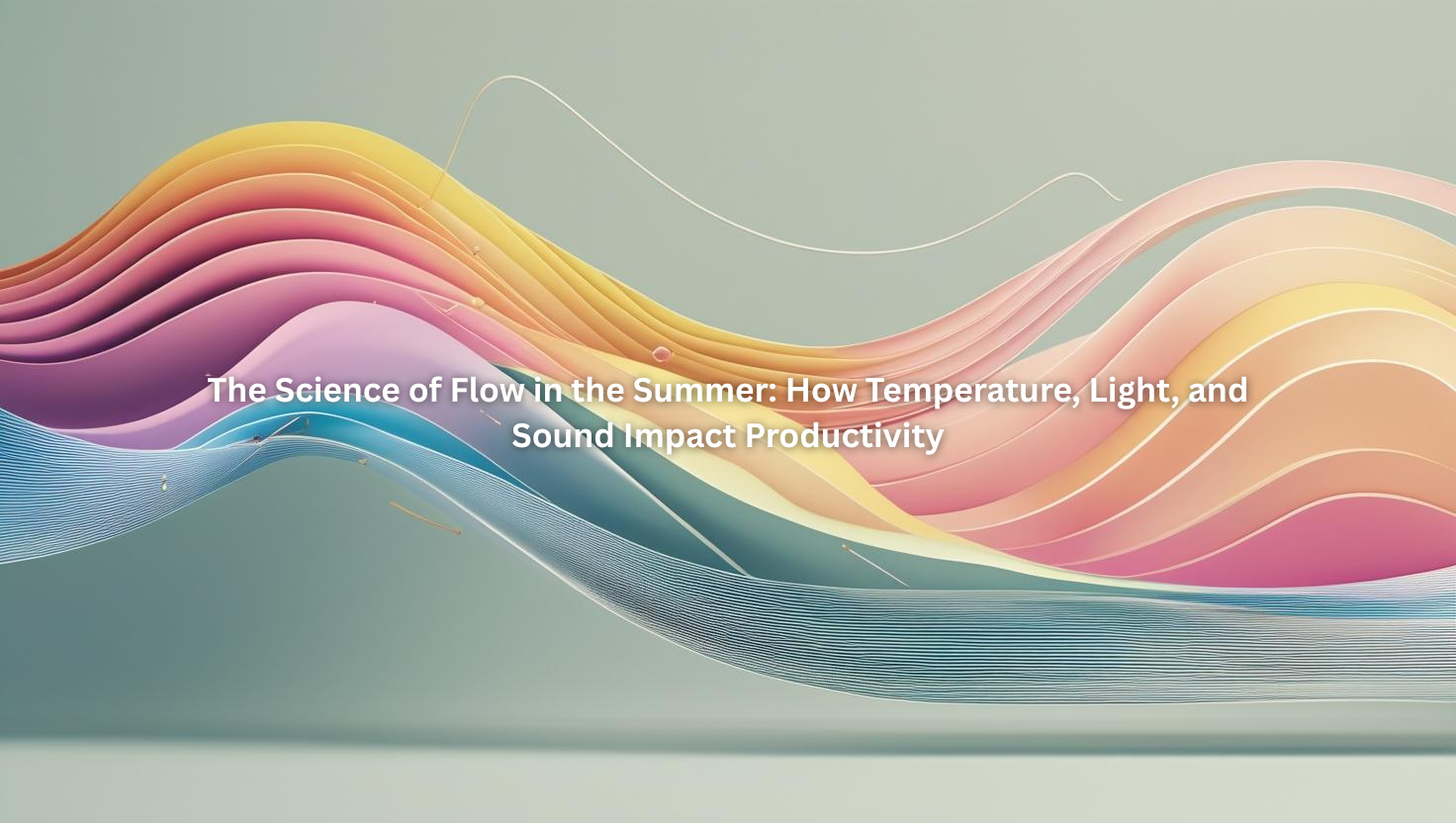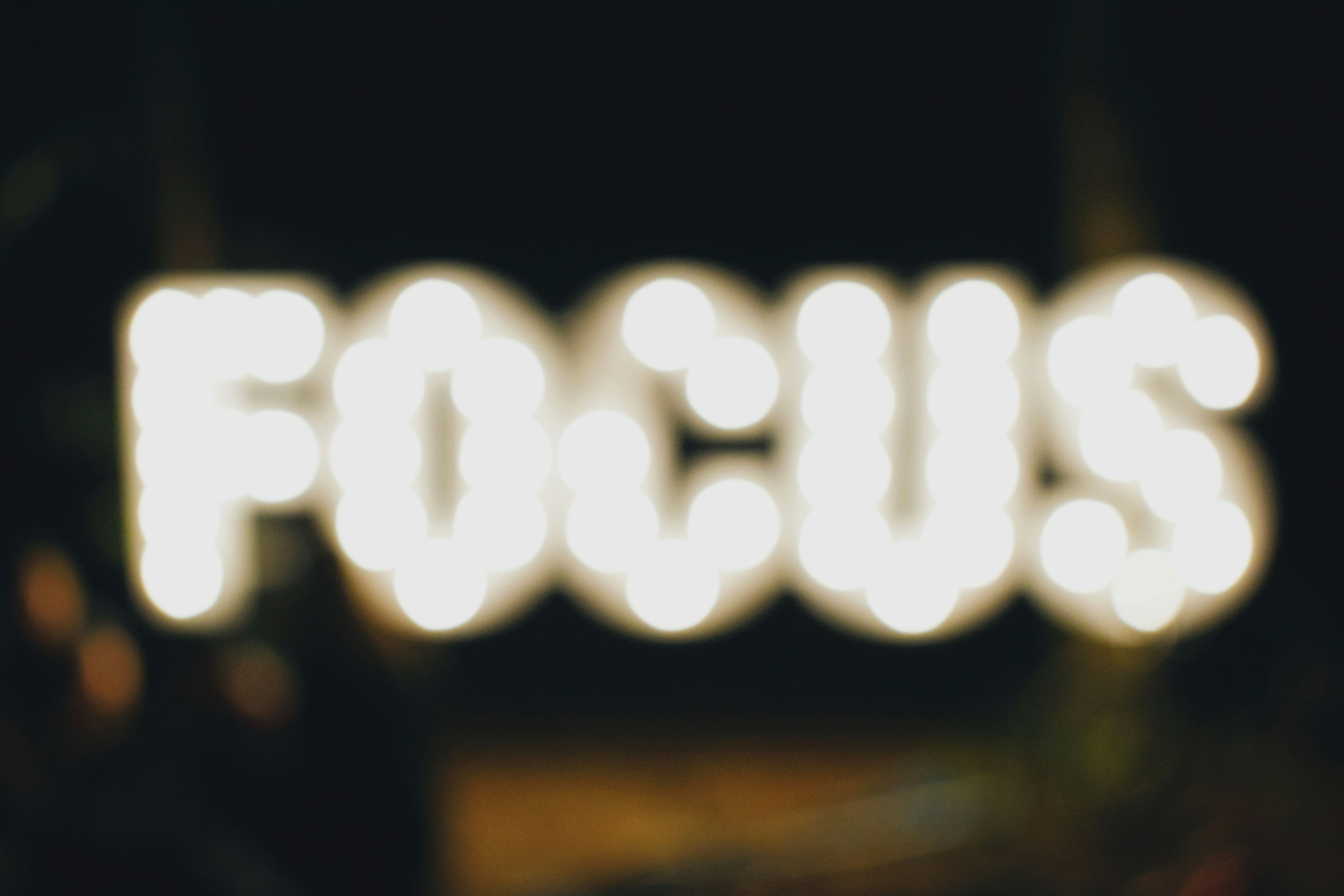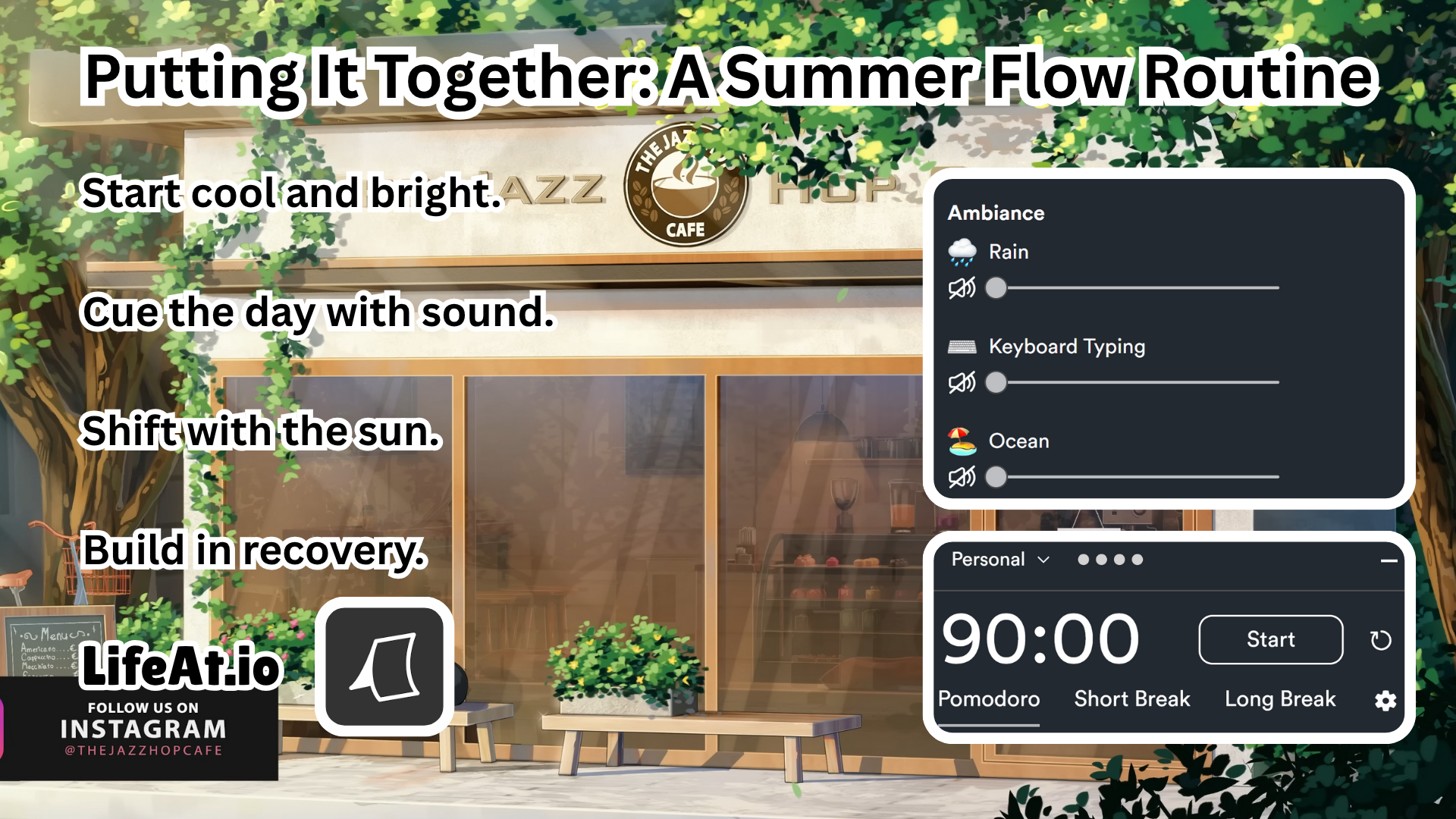Flow isn’t just about focus—it’s about the environment you create around it.
When you think of summer, productivity probably isn’t the first thing that comes to mind. Long days, sticky heat, and shifting routines can make deep focus feel almost impossible. But summer doesn’t have to be the season of scattered energy. In fact, with a few thoughtful adjustments to your environment, you can actually use the season to enhance your flow.
Flow, that sweet spot of total absorption where work feels fluid and time slips away, isn’t just a mindset—it’s a neurobiological state. And it turns out, your surroundings play a big role in helping you access it. Let’s break down how temperature, light, and sound impact your ability to focus—and how you can shape them for better summer productivity.

🧠 First: What Is Flow, Really?
Flow is a term coined by psychologist Mihaly Csikszentmihalyi to describe the state where you’re fully immersed in a task—energized, focused, and often performing at your best. It happens when challenge meets skill, and distractions fade into the background.
But what gets overlooked is this: your brain is incredibly sensitive to your environment. If the temperature is off, the light too harsh, or the background too chaotic, flow becomes harder to reach—not because you’re lazy, but because your nervous system is overstimulated.
🌡 Temperature: Your Brain Runs Best on Cool
Heat can tank your focus—and there’s science to back it up. Studies show that higher temperatures increase mental fatigue and decrease cognitive performance. That’s because your body works harder to regulate itself in the heat, leaving less energy for focus and problem-solving.
Try this:
- Keep your workspace between 68–72°F (20–22°C)—the cognitive sweet spot.
- Use a desk fan or cold drink to create microbursts of cooling.
- Take short movement breaks in cooler spaces to reset your internal thermostat.
Even small shifts in temperature can reduce mental fog and bring you back into alignment with your work.
☀️ Light: Bright Days, Better Moods (With Caveats)
Natural light can be one of your greatest allies for summer focus. Exposure to sunlight boosts serotonin, improves mood regulation, and helps regulate your circadian rhythm—making it easier to feel alert and engaged during the day.
But too much exposure to harsh, overhead light (especially during peak sun hours) can lead to squinting, eye strain, and even agitation.
Set the tone with light:
- Position your desk near a window for soft, indirect daylight.
- Use sheer curtains to diffuse brightness during midday glare.
- Switch to warmer-toned bulbs in the afternoon to mimic the body’s natural wind-down rhythm.
Think of your light setup as your brain’s brightness dial—find the setting that supports alertness without overstimulation.
🎧 Sound: The Right Audio Can Shortcut You Into Flow
Sound isn’t just background—it’s one of the most powerful tools you have for shaping focus states. Research shows that steady, non-intrusive sound—like ambient music, nature loops, or low-frequency rhythms—can help increase concentration, reduce stress, and trigger flow faster.
And in summer, when energy dips or distractions rise, sound can help your brain re-enter focus mode without resistance.
What to try:
- Morning flow boost: Lo-fi beats, ambient electronic, or nature-based soundscapes.
- Afternoon reset: Gentle binaural tones or instrumental jazz to sustain focus without fatigue.
- Evening wind-down work: Warm, slower-paced sounds to help shift into lighter admin or creative tasks.
Pair sound with timers or time blocks (like the Pomodoro method) for a rhythmic, reliable entry point into deep work.

🌀 Your Environment, Your Nervous System
The common thread across temperature, light, and sound? They all communicate directly with your nervous system.
- Too hot? Your body enters overdrive.
- Too bright? Your senses spike.
- Too noisy or silent? Your brain gets pulled out of alignment.
Designing your summer environment with intention means creating the conditions your brain needs to feel safe, alert, and capable. It’s not about control—it’s about cooperation with your biology.
🔄 Putting It Together: A Summer Flow Routine
Here’s a simple flow-supporting rhythm to try:
- Start cool and bright. Open windows early, let in natural light, and create airflow.
- Cue the day with sound. Start work with a focus soundscape to train your brain into “go” mode.
- Shift with the sun. In the afternoon, lower light levels, cool down your space, and switch to softer sounds.
- Build in recovery. After deep work, let your nervous system reset—step away, stretch, hydrate, or rest.
You don’t need to force yourself into productivity that doesn’t feel good. You can engineer flow in a way that honors both your work and your wellness.

Final Thought: Flow Isn’t Seasonal—But It Is Sensory
Summer doesn’t have to be the enemy of focus. In fact, it can be a catalyst—if you learn how to work with your environment, not against it.
Your brain wants to focus. It just needs the right cues.
And in a season full of light, warmth, and sound, you’ve got all the ingredients to create a deeply supportive flow zone.
So this week, try changing one environmental factor—your sound, your light, your temperature—and notice what shifts. Flow is closer than you think.
✨ Journal Prompt:
What’s one sensory element in my workspace that could support more focus this summer?

.png)

.avif)